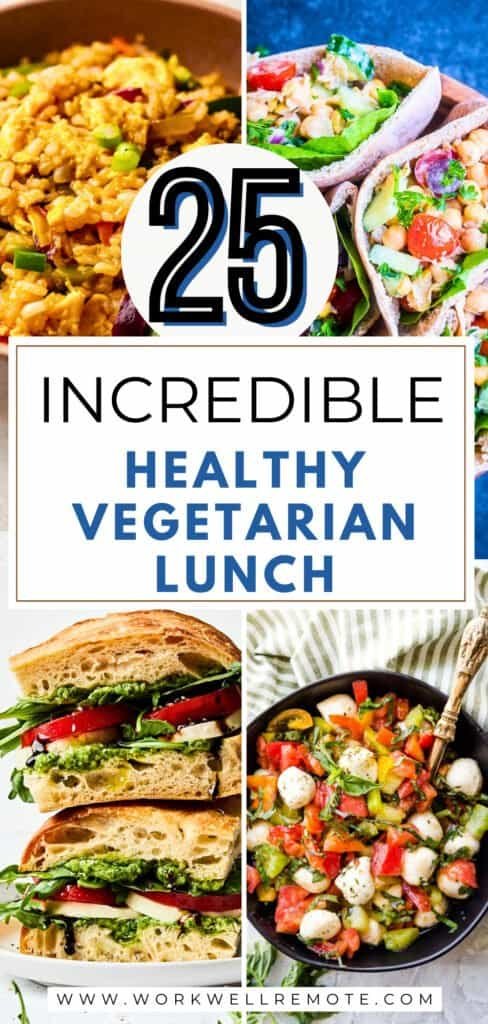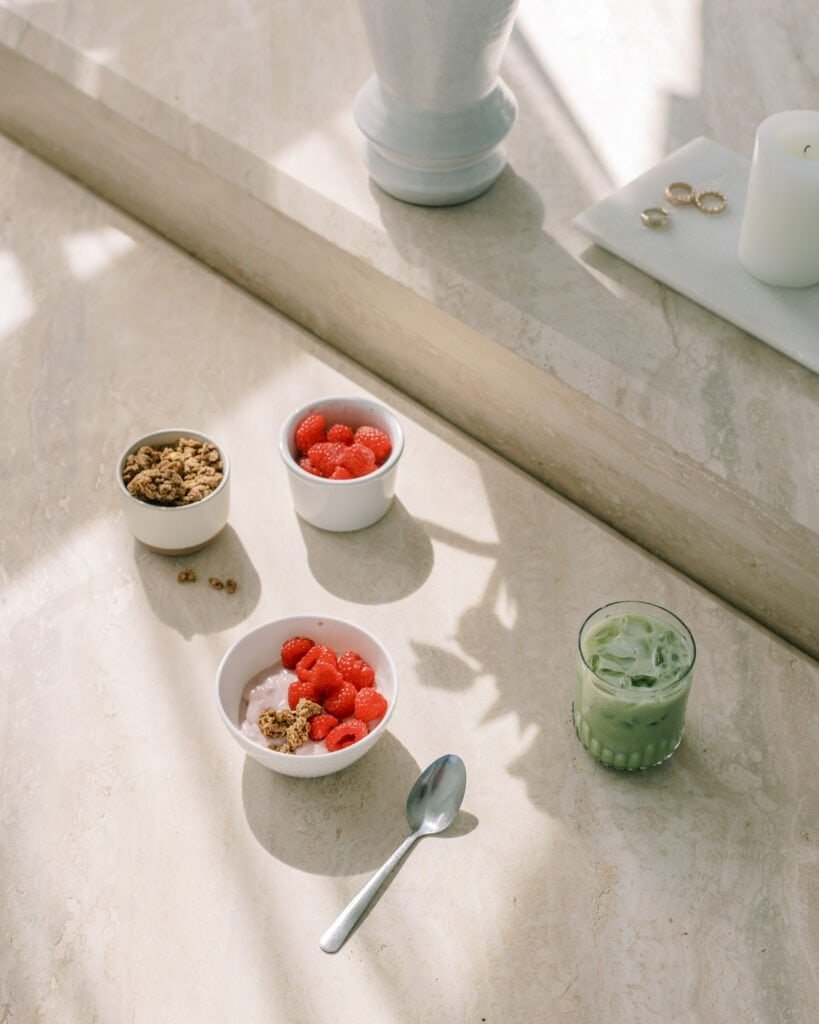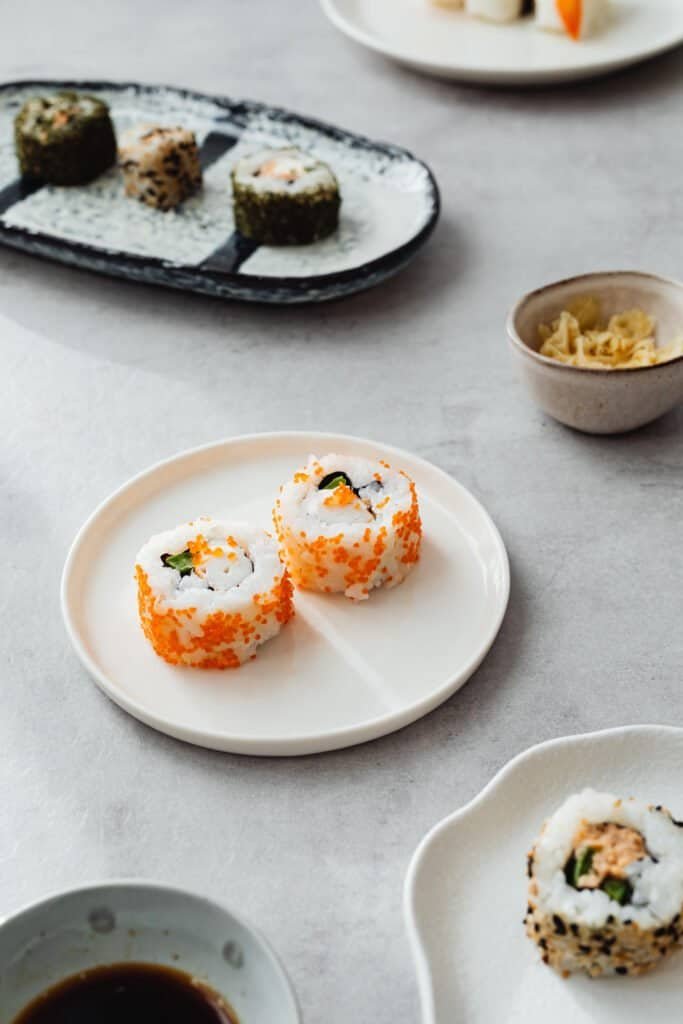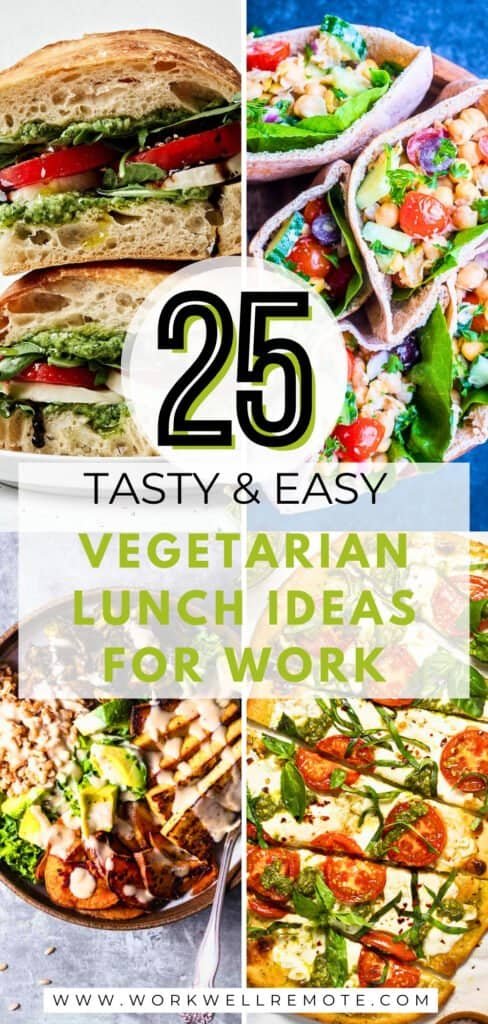This post may contain paid and/or affiliate links. I make a small commission at no extra cost to you. Please see our Privacy Policy.
This post shows you the best delicious vegetarian lunch ideas for working from home.

Working from home means you can skip the sad desk lunches and treat yourself to something fresh, colorful, and full of flavor.
The great thing about vegetarian lunches is that they can be hearty, nourishing, and exciting without taking hours to prepare.

Delicious Vegetarian Lunch Ideas
From vibrant salads and warm soups to satisfying wraps and grain bowls, there’s no shortage of delicious combinations to try.
I’ve put together this post to give you plenty of inspiration for easy vegetarian lunches you can make right in your kitchen.
Whether you’re looking for something light and energizing or rich and comforting, these vegetarian lunches will keep you going strong all day.
1. Caprese Sandwich
There’s something so refreshing about the combination of mozzarella, tomatoes, and basil.
I love layering them on crusty bread with a drizzle of balsamic glaze.
The creaminess of the cheese pairs perfectly with the juicy tomatoes.
For a little crunch, add fresh arugula before closing the sandwich.
2. Mediterranean Chickpea Salad
This salad is bursting with flavor thanks to the mix of chickpeas, cucumbers, cherry tomatoes, and red onions.
I love tossing everything with feta cheese and a simple lemon-olive oil dressing.
The chickpeas make it filling enough for lunch, while the fresh veggies keep it light.
It’s one of those meals that tastes even better the next day.
3. Avocado and Black Bean Wrap
I adore the creaminess of avocado paired with the heartiness of black beans.
Spread mashed avocado on a tortilla, then add black beans, corn, diced tomatoes, and shredded lettuce.
A squeeze of lime brings it all together.
This is one of my go-to wraps when I’m short on time.
4. Tomato Basil Soup with Grilled Cheese
This is comfort food at its finest.
The soup is rich with fresh tomatoes and a hint of garlic, and I love dipping a gooey grilled cheese right into it.
Using sourdough bread makes the sandwich extra crispy.
This combo never fails to make lunchtime feel special.
5. Veggie Stir-Fry with Rice
I love a good stir-fry for using up whatever vegetables I have in the fridge.
Broccoli, carrots, bell peppers, and snap peas are my favorites.
Toss them in a quick soy sauce and garlic glaze, then serve over fluffy rice.
It’s simple, fast, and so satisfying.
6. Greek Pita Pockets
These pita pockets are loaded with hummus, cucumbers, tomatoes, olives, and feta cheese.
I love adding a sprinkle of oregano for extra flavor.
They’re portable, easy to eat, and taste like something you’d get from a café.
Perfect for busy workdays.
7. Lentil and Veggie Soup
This soup is hearty, filling, and packed with protein from the lentils.
I like adding carrots, celery, spinach, and a little smoked paprika for warmth.
Serve it with a slice of crusty bread to soak up all that delicious broth.
It’s one of those lunches that keeps you full all afternoon.
8. Roasted Veggie Grain Bowl
There’s something so satisfying about roasted vegetables over a bed of quinoa or brown rice.
I love mixing sweet potatoes, zucchini, and bell peppers with a tahini dressing.
The warm veggies and nutty grains make a cozy, well-rounded lunch.
9. Margherita Flatbread
Flatbreads are such an easy way to make lunch feel like a treat.
I top mine with marinara sauce, fresh mozzarella, tomato slices, and basil leaves.
A quick bake in the oven makes the crust crispy and the cheese perfectly melted.
10. Spinach and Feta Omelet
This omelet is light but still filling.
I love the way the salty feta melts into the eggs, while the spinach adds freshness.
A side of whole grain toast makes it a balanced meal.
It’s also a great option if you want breakfast for lunch.
11. Butternut Squash Soup
This soup is smooth, slightly sweet, and full of fall flavor.
I like blending roasted butternut squash with onion, garlic, and a touch of cream.
Serve it with a small salad or grilled bread for a complete lunch.
It’s pure comfort in a bowl.
12. Veggie Sushi Rolls

Making sushi at home is easier than it looks.
I love filling nori sheets with sushi rice, cucumber, avocado, and carrot.
Rolling and slicing them is surprisingly quick, and dipping them in soy sauce makes lunch feel like a little celebration.
13. Mediterranean Pasta Salad
This pasta salad is full of bold flavors—think olives, sun-dried tomatoes, feta, and fresh parsley.
I toss it with olive oil and lemon juice for brightness.
It’s great served cold, which makes it perfect for prepping ahead of time.

14. Sweet Potato and Black Bean Tacos
These tacos are one of my favorite vegetarian lunches.
The roasted sweet potatoes are tender and slightly caramelized, while the black beans add protein.
I top them with avocado slices and a drizzle of lime crema for extra flavor.
15. Zucchini Noodle Stir-Fry
I love swapping regular noodles for zucchini noodles when I want something lighter.
Toss them in sesame oil with mushrooms, bell peppers, and a splash of soy sauce.
It’s quick, healthy, and ready in under 10 minutes.
16. Falafel Wraps
These wraps are packed with crispy falafel, lettuce, tomatoes, cucumbers, and tahini sauce.
I like using warm pita bread to make them extra cozy.
Every bite is full of fresh, zesty flavors.
17. Broccoli Cheddar Soup
This soup is creamy, cheesy, and full of tender broccoli.
I love pairing it with a crusty roll for dipping.
It’s the kind of feels indulgent but still gets in your veggies.
18. Eggplant Parmesan Sandwich
This sandwich is loaded with breaded eggplant slices, marinara sauce, and melted mozzarella.
I love how hearty it is while still being vegetarian.
Toasting the bread makes it even better.
19. Spinach and Ricotta Stuffed Shells
These pasta shells are filled with creamy ricotta and spinach, then baked in marinara sauce.
I love making a big batch so I have leftovers for the week.
It’s a warm, comforting lunch that’s worth the prep.
20. Avocado Caprese Salad
This twist on the classic caprese adds creamy avocado slices alongside mozzarella, tomatoes, and basil.
I drizzle it with balsamic glaze for a burst of flavor.
It’s fresh, colorful, and takes only minutes to make.
21. Vegetable Quesadilla
This quesadilla is stuffed with sautéed onions, peppers, mushrooms, and cheese.
I love serving it with salsa and sour cream for dipping.
It’s quick, satisfying, and great for using up leftover vegetables.
22. Chickpea and Spinach Curry
This curry is rich, flavorful, and perfect for when you want something warm.
I cook chickpeas with spinach, onion, garlic, and coconut milk, then serve it over rice.
It’s one of my favorite meatless comfort meals.
23. Caponata with Crusty Bread
Caponata is a Sicilian eggplant dish with tomatoes, olives, and capers.
I love spooning it over toasted bread for a flavorful, Mediterranean-inspired lunch.
The sweet and tangy flavors are incredible together.
24. Mushroom Risotto
This risotto is creamy and earthy thanks to the mushrooms and Parmesan.
I like making it on a slower day when I can stir and let it develop flavor.
It feels like a special lunch but is still vegetarian-friendly.
25. Roasted Red Pepper Hummus Plate
This plate is simple yet satisfying.
I pair roasted red pepper hummus with pita bread, cucumbers, carrots, and olives.
It’s a light lunch that’s full of flavor and perfect for snacking while working.


Leave a Reply